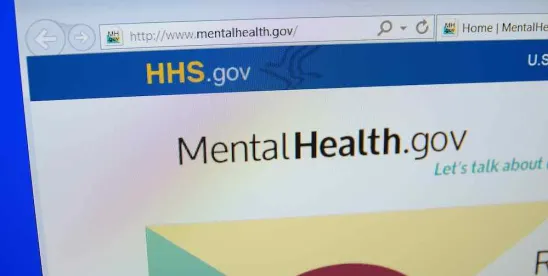The Department of Health and Human Services (“HHS”) Centers for Medicare & Medicaid Services (“CMS”) recently issued the final “HHS Notice of Benefit and Payment Parameters for 2026” (hereinafter referred to as the “Rule”) setting new and updated standards for Health Insurance Marketplaces and health insurance issuers, brokers, and agents who help connect millions of consumers to health insurance coverage. Effective January 15, 2025,[1] the Rule finalizes additional safeguards for marketplace coverage beginning plan year 2026, protecting consumers from unauthorized changes to their health care coverage, ensuring the integrity of the federally facilitated Marketplaces, and making it easier for consumers to understand their costs and enroll in coverage through HealthCare.gov. The changes in this Rule aim to minimize administrative burden, ensure program integrity, advance health equity, and mitigate health disparities.
Preventing Unauthorized Marketplace Activity Among Agents and Brokers
- This Rule expands CMS’s authority to immediately suspend an agent or broker’s ability to transact information with the Marketplace if there is an unacceptable risk to the accuracy of Marketplace eligibility determinations, operations, applicants, enrollees, or Marketplace information technology systems. CMS aims to protect consumers and support the integrity of the Exchange by increasing transparency.
- This Rule also allows CMS to hold lead agents accountable for misconduct or noncompliance with HHS Exchange standards and requirements. This update will allow CMS to strengthen compliance reviews and enforcement actions against agencies and their lead agents to ensure that the individuals who are directing and/or overseeing the misconduct or noncompliance are held accountable.
- Additionally, CMS has updated its model consent form to help agents, brokers, and web-brokers obtain and document consumer consent for Marketplace enrollments and eligibility applications. The updates also add scripts that agents, brokers, and web-brokers may use to meet the consumer consent and eligibility application review requirements via an audio recording.
Addressing Allowable Cost-Sharing Reduction (“CSR”) Loading
- CSR loading practices are allowed when the adjustments are actuarially justified and follow state law, provided the issuer does not otherwise receive reimbursement for such amounts. CSR loading increases premium rates to offset the cost of providing cost-sharing reductions, which lower the amount consumer pay for deductibles, copayments, and coinsurance. Codifying these practices likely will promote market stability and provide greater clarity for issuers.
Advancing Health Equity and Mitigating Health Disparities
- The Rule allows issuers to implement fixed-dollar or percentage-based premium payment thresholds, helping consumers who owe small premium amounts to maintain coverage even if they have not paid the full amount owed.
- The Rule amends the Medical Loss Ratio (“MLR”) reporting and rebate calculations for qualifying issuers’ plans that focus on underserved communities with high health needs. These plans will have the option to modify the treatment of net risk adjustment receipts for purposes of the MLR and rebate calculations, so that these net receipts impact the MLR denominator rather than the MLR numerator.
- CMS will conduct Essential Community Provider (“ECP”) certification reviews to ensure issuers include a sufficient number and geographic distribution of ECPs in their provider networks.
Making It Easier to Enroll in and Maintain Health Care Coverage
- The Rule extends consumer notification requirements to two consecutive tax years for failure to file and reconcile. Exchanges are required to send notices to tax filers or their enrollees for the second year in which they have failed to reconcile their advanced payment of the premium tax credit (“APTC”). A notice to the tax filer may specifically explain that if they fail to file and reconcile for a second consecutive year, they risk being determined ineligible for APTC. Alternatively, an Exchange may send a more general notice to the enrollee or their tax filer explaining that they are at risk of losing APTC, without the additional detail that the tax filer has failed to file and reconcile APTC. These notices are intended to educate consumers about the need to file and reconcile to keep health care coverage affordable.
- The Rule updates to the Basic Health Program (“BHP”) payment methodology noting that CMS will recalculate the premium adjustment factor if a state is using the premiums from a year in which BHP was only partially implemented as the basis for their federal BHP payments. Also, CMS provided a technical clarification explaining that if there is more than one-second lowest-cost silver plan in a county, a state’s BHP payment will be based on the premiums of the relevant plan in the largest portion of the county, as measured by the county’s total population.
Simplifying Plan Choice and Improving Plan Selection
- Issuers on the Marketplaces are required to offer standardized plan options at every product network type, at every metal level, and throughout every service area where they offer non-standardized plan options. (Standardized plan options are Qualified Health Plans (“QHPs”) with standardized cost sharing and coverage for certain benefits.) CMS is updating standardized plan options for plan year 2026 to ensure the plans’ actuarial values (“AVs”) align with the plans’ metal levels and continuity in the plans’ designs. Also, issuers offering numerous standardized plan options within the same product network type, metal level, and service area must distinguish these plans from each other to minimize duplicative offerings (which would make it easier for consumers to select and compare plan options).
- The Rule amends the regulations to clarify that issuers have flexibility to determine whether to include coverage for adult dental, pediatric dental, and adult vision benefits within their non-standardized plan options.
Increase Transparency
- The Rule includes CMS’s public release of State Marketplace operations data, such as spending on outreach, education, and marketing, and call center metrics to increase transparency, efficiency, and accountability. Beginning January 1, 2026, CMS will also release aggregated, summarized Quality Improvement Strategy (“QIS”) information annually, with an aim to improve the quality of health care coverage.
Further Refining the HHS-operated Risk Adjustment Program
- CMS is recalibrating the risk adjustment models beginning in the 2026 benefit year using 2020-2022 data. It will also phase out market pricing adjustment to plan liability associated with Hepatitis C drugs (aligning these drugs with other specialty drugs) and add HIV pre-exposure prophylaxis (PrEP) drugs to the risk adjustment models as another factor for both children and adults (increasing coverage and access to care for these patients).
- CMS is making changes to the initial and second validation audit policies required for issuers offering risk adjustment covered plans to improve the precision of these audits and the risk adjustment results.
- Issuers of risk adjustment covered plans can appeal second validation audit risk adjustment results or error rate findings if the amount in dispute exceeds the materiality threshold for filing. CMS finalized a second materiality threshold to rerun the results if the appeal is successful. That threshold is met if the financial impact on the issuer is at least $10,000. It is expected that this would reduce administrative costs both to issuers and the government.
Strengthening the Marketplace’s Impact on Consumers
- The Rule establishes a user fee rate of 2.5% of monthly premiums for the federal Marketplace, and 2.0% of monthly premiums for state-based Marketplaces on the federal platform. If enhanced premium tax credit subsidies are extended for consumers through the 2026 benefit year by July 31, 2025, then the user fee rates would be reduced to 2.2% and 1.8% of total monthly premiums, respectively.
- The Rule finalizes a $0.20 per member per month risk adjustment user fee for the 2026 benefit year.
- CMS revised its methodology to update its Actuarial Value Calculator to calculate an issuer’s level of coverage (i.e., metal tier) so that only a single, final version of it is published each year.
- The Rule includes guidance for State Marketplaces to review and resolve data inaccuracies and send them to HHS within 60 days of receipt of completed submissions from issuers. This would help efficiently resolve issues with accurate and timely payments of APTC to consumers and increase their access to health care coverage.
- The Rule adds the clarification that the Marketplace may deny QHP certification to any plan failing to meet certain criteria. Issuers may request reconsideration of a denial, provided that they submit a written request of reconsideration with clear and convincing evidence that the denial was in error.
FOOTNOTES
[1] The Rule is not impacted by President Trump’s pause of agency action since the Rule’s effective is before the Executive Order was issued on January 20, 2025.




 />i
/>i

